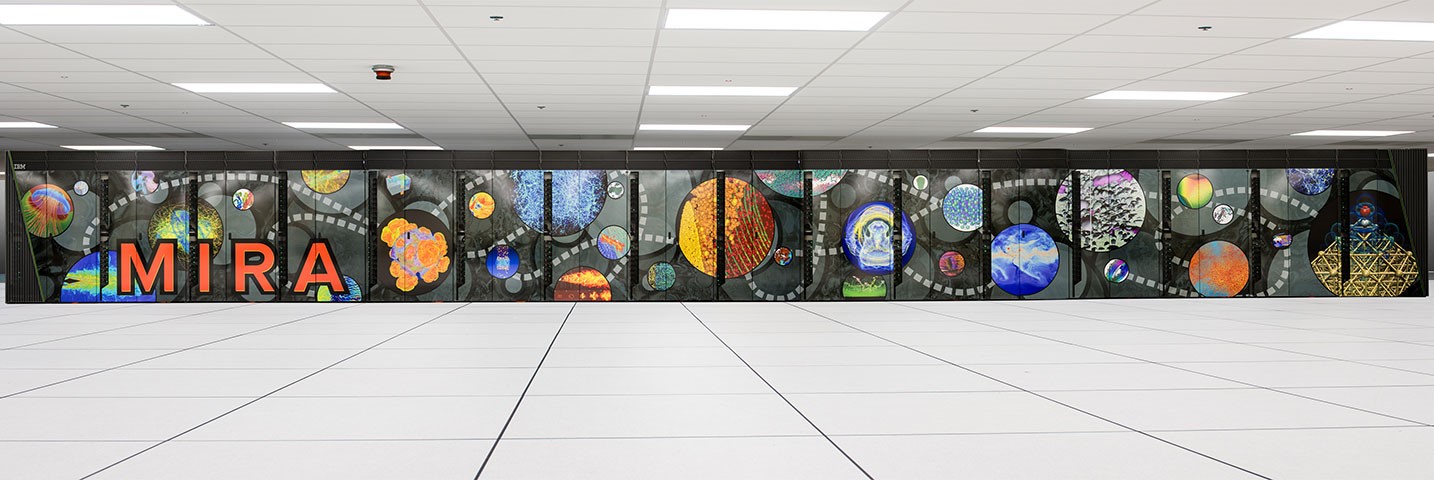Extreme Computing for Extreme Conditions

A generation ago, engineers carried out laborious hand calculations to predict the conditions encountered in flight. Now, your own laptop or even your cellphone provides the computational power of a building full of human calculators. Given that power, what could you do with 786432 laptops? Prof. Jonathan Poggie’s research group is demonstrating just that, under a 2016-2017 DoE INCITE Award on the Argonne National Laboratory supercomputer Mira, and a grant from the Air Force Office of Scientific Research.
When an aerospace vehicle flies at a high Mach number, unsteady separation and shock-wave / boundary-layer interaction cause intense heating and unsteady mechanical loads. Because the low frequency range of this unsteadiness can overlap with structural resonant frequencies, such separation can lead to dangerous fatigue loading. Graduate student Kevin Porter (MS ‘17) carried out massively-parallel simulations of separation unsteadiness on Mira to investigate this problem. Porter replicated the unsteadiness observed in experiments, and found flow correlations that hold promise for new active flow control techniques, based on plasma discharges, that could mitigate unsteadiness.
Movie of the density field in flow over a ramp representative of a hypersonic engine inlet.
The irregular dark region at the bottom is the turbulent boundary layer, and the sharp transition from light to dark is a shock wave.
Prof. Poggie’s research group has branched out into a new field in 2017, considering the transition at hypersonic speeds from smooth,
laminar flow to chaotic, turbulent flow. Heating rates can increase by an order of magnitude when the flow becomes turbulent, so
predicting hypersonic transition is essential to hypersonic design. Transition is very sensitive to acoustic noise, however, and
only two wind hypersonic wind tunnels in the United States (one at Purdue,) have the required quiet conditions to match flight. While
we wait for new quiet tunnels to be built, we need to make better use of existing, noisy wind tunnels.
That’s where Dr. Poggie’s research comes in. Under a grant from the Office of Naval Research and a new DoD High Performance Computing Modernization Program Frontier Project (2017-2022), Poggie’s group aims to use direct numerical simulation to predict the effects of wind tunnel noise, and make conventional wind tunnels more useful for design.
Where does cold plasma come in? Poggie’s group is studying the effect of disturbances generated by a phased array of nanosecond-pulse plasma actuators as a way to control transition.
Working on this project is graduate student Geoffrey Andrews, winner of Aviation Week’s prestigious “20 Twenties” award for 2017. Andrews is an acrobatic pilot, and an immensely enthusiastic student. He tweeted in August “First meeting with my Ph.D. advisor and we've already agreed to publish a paper and solve a decades-old aerodynamics problem.”
There is no guarantee that such a challenging problem will be solved in the next few years, but keep an eye Prof. Poggie’s web page for updates.